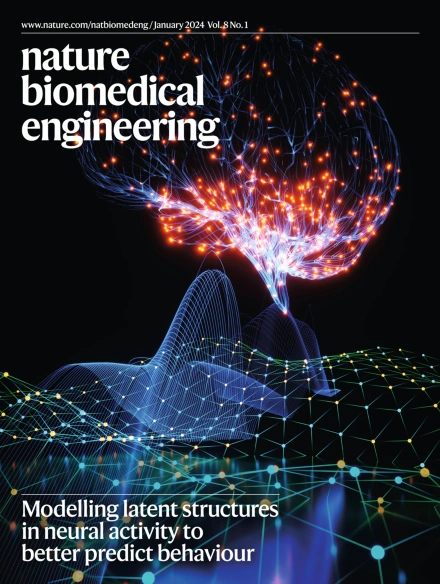Spatial profiling of gene editing by in situ sequencing in mice and macaques.
IF 26.8
1区 医学
Q1 ENGINEERING, BIOMEDICAL
引用次数: 0
Abstract
Base and prime editing technologies precisely install defined nucleotide edits in both dividing and non-dividing cells, offering potential for correcting pathogenic mutations directly in organisms. However, to fully leverage their therapeutic potential, accurately measuring editing rates with high spatial resolution is crucial. Here we use imaging-based in situ sequencing (ISS) to map base and prime editing events within native tissues. We establish and validate this technology in mouse brains treated with intein-split adenine base editors or prime editors delivered via adeno-associated viral vectors. We next apply ISS in the liver of mice and macaques treated with adenine base editors encoded on lipid nanoparticle-encapsulated mRNA and guide RNA (RNA-LNP). Effective editing was observed across all metabolic zones of liver lobules. Moreover, in experiments where repeated doses of RNA-LNP are administered, the initial dose does not affect the editing efficiency and distribution of the subsequent dose. Our results demonstrate how ISS can visualize gene editing events in vivo and suggest that base editor delivery using RNA-LNP could be used to address a wide spectrum of metabolic liver diseases.小鼠和猕猴原位测序基因编辑的空间分析。
碱基和引物编辑技术精确地在分裂和非分裂细胞中安装定义的核苷酸编辑,为直接纠正生物体中的致病突变提供了潜力。然而,为了充分利用它们的治疗潜力,精确测量高空间分辨率的编辑率至关重要。在这里,我们使用基于成像的原位测序(ISS)来绘制原生组织中的碱基和引物编辑事件。我们在小鼠大脑中建立并验证了该技术,该技术使用了内部分裂腺嘌呤碱基编辑器或通过腺相关病毒载体传递的引物编辑器。接下来,我们将ISS应用于用脂质纳米颗粒封装的mRNA和引导RNA (RNA- lnp)编码的腺嘌呤碱基编辑器处理的小鼠和猕猴肝脏。在肝小叶的所有代谢区都观察到有效的编辑。此外,在重复给药RNA-LNP的实验中,初始剂量不影响后续剂量的编辑效率和分布。我们的研究结果展示了ISS如何在体内可视化基因编辑事件,并表明使用RNA-LNP的碱基编辑器传递可用于解决广泛的代谢性肝脏疾病。
本文章由计算机程序翻译,如有差异,请以英文原文为准。
求助全文
约1分钟内获得全文
求助全文
来源期刊

Nature Biomedical Engineering
Medicine-Medicine (miscellaneous)
CiteScore
45.30
自引率
1.10%
发文量
138
期刊介绍:
Nature Biomedical Engineering is an online-only monthly journal that was launched in January 2017. It aims to publish original research, reviews, and commentary focusing on applied biomedicine and health technology. The journal targets a diverse audience, including life scientists who are involved in developing experimental or computational systems and methods to enhance our understanding of human physiology. It also covers biomedical researchers and engineers who are engaged in designing or optimizing therapies, assays, devices, or procedures for diagnosing or treating diseases. Additionally, clinicians, who make use of research outputs to evaluate patient health or administer therapy in various clinical settings and healthcare contexts, are also part of the target audience.
 求助内容:
求助内容: 应助结果提醒方式:
应助结果提醒方式:


